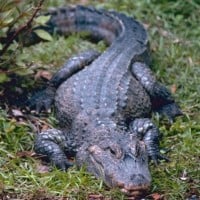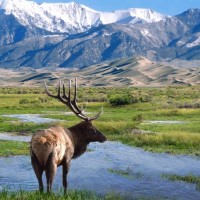Top Ten "Keystone Species"
Keystone species are species that within their own ecosystems are irreplaceable, or so it is argued. Nothing else within their ecosystem can fill the void were this species to go extinct. They are considered essential to keeping the biodiversity of any given ecosystem in balance. Take these species out of their particular ecosystems, and the system would suffer, fail or quite possibly collapse. Give these species their proper respect, they are carrying a lot of responsibility. They are not necessarily the top predator within a particular ecosystem, but that is oftentimes the case, as these species tend to keep prey animals numbers in check, and therefore keep the whole system in balance. The wonder of nature's self regulating is personified in these species. Feel free to add any that you believe to be a keystone to their ecosystems.
These guys clearly love to play in their spare time, kinda funny to watch em play. So is that their keystone contribution, comedic relief? No, but most would agree that's a nice aside.
Sea otters prey on sea urchins. In turn, sea urchins feed on kelp forests. Left unchecked, sea urchins can decimate kelp forests, and this has a negative impact on many creatures that rely on the kelp for survival. The whole ecosystem suffers, or fails. Thanks sea otters.
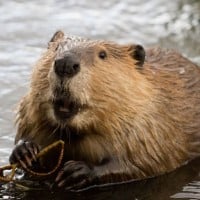 The beaver is a primarily nocturnal, large, semiaquatic rodent. Castor includes two extant species, the North American beaver and Eurasian beaver. Beavers are known for building dams, canals, and lodges.
The beaver is a primarily nocturnal, large, semiaquatic rodent. Castor includes two extant species, the North American beaver and Eurasian beaver. Beavers are known for building dams, canals, and lodges. Beavers are ecosystem engineers, and their dam building provides still water, which allows a host of other species to flourish.
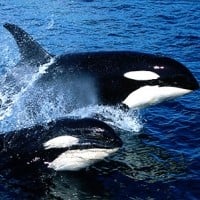 The Orca, or Killer Whale (Orcinus orca), is a toothed whale belonging to the oceanic dolphin family, of which it is the largest member. It is recognizable by its black-and-white patterned body. Orcas are a cosmopolitan species and can be found in all of the world's oceans, in a variety of marine environments,... read more
The Orca, or Killer Whale (Orcinus orca), is a toothed whale belonging to the oceanic dolphin family, of which it is the largest member. It is recognizable by its black-and-white patterned body. Orcas are a cosmopolitan species and can be found in all of the world's oceans, in a variety of marine environments,... read more Yes, as apex predators these guys provide balance to the population of prey species within their ecosystems. Thanks 4 adding.
Beautiful and intelligent creatures. Consider yourself lucky if you spot one while kayaking!
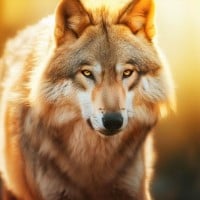 The wolf (Canis lupus), also known as the gray or grey wolf, is a large canine native to Eurasia and North America. Over thirty subspecies of Canis lupus have been recognized, with gray wolves comprising the wild subspecies. As the largest extant member of the Canidae family, the wolf is distinguished... read more
The wolf (Canis lupus), also known as the gray or grey wolf, is a large canine native to Eurasia and North America. Over thirty subspecies of Canis lupus have been recognized, with gray wolves comprising the wild subspecies. As the largest extant member of the Canidae family, the wolf is distinguished... read more Wired to take out the weak, sick, young and elderly, it's commonly known that these guys actually help ensure the overall health of their prey species. Apex predators tend to keep the balance in their ecosystems through this same behavior.
Now, it's true this branch of predators is the bane of farmers of livestock in their ecosystem, as they do indeed take the easy meal sometimes provided by this interaction. To that point, I would simply say that it is us who have encroached on their ecosystem, and not the other way around.
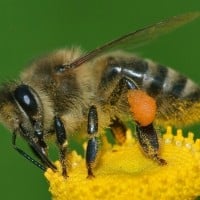
Pollinators. The plants flourish and provide shelter and food for insects, and they in turn become food for other creatures, including birds.
The bee/plant relationship is also highly symbiotic, mutually assured existence.
The bee population is sadly in decline, mostly due to all the chemicals us humans use in our fields.
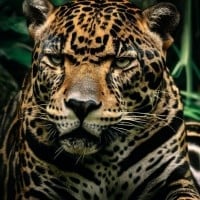 The jaguar (Panthera onca) is a large cat species and the only living member of the genus Panthera native to the Americas. With a body length of up to 1.85 m (6 ft 1 in) and a weight of up to 158 kg (348 lb), it is the largest cat species in the Americas and the third largest in the world. Its distinctively... read more
The jaguar (Panthera onca) is a large cat species and the only living member of the genus Panthera native to the Americas. With a body length of up to 1.85 m (6 ft 1 in) and a weight of up to 158 kg (348 lb), it is the largest cat species in the Americas and the third largest in the world. Its distinctively... read more Another apex predator. In the rainforests of Central and South America, they prey on a wide variety of species (87), and keep those prey animals numbers in check.
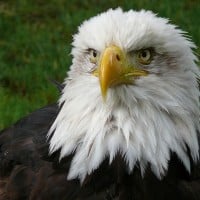 Eagle is the common name for many large birds of prey of the family Accipitridae. Eagles belong to several groups of genera, some of which are closely related. Most of the 60 species of eagle are from Eurasia and Africa. Outside this area, just 14 species can be found - 2 in North America, 9 in Central... read more
Eagle is the common name for many large birds of prey of the family Accipitridae. Eagles belong to several groups of genera, some of which are closely related. Most of the 60 species of eagle are from Eurasia and Africa. Outside this area, just 14 species can be found - 2 in North America, 9 in Central... read more
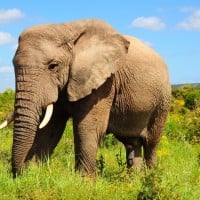 African elephants are elephants of the genus Loxodonta. The genus consists of two extant species: the African bush elephant, L. africana, and the smaller African forest elephant, L. cyclotis.
African elephants are elephants of the genus Loxodonta. The genus consists of two extant species: the African bush elephant, L. africana, and the smaller African forest elephant, L. cyclotis. On the savannahs of Africa, these magnificent creatures graze on small trees. This allows sunlight to reach the grass below. The grasslands flourish, and provide an essential food source for a myriad of animals, and in turn, provides cover for predators stalking these herds. Without the elephants (and other tree leaf munchers) the savannah would become a forest or scrublands.
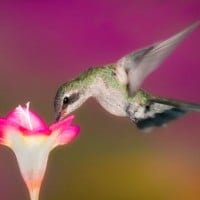 Hummingbirds are birds from the Americas that constitute the family Trochilidae. They are among the smallest of birds, most species measuring 7.5–13 cm. they are the cutest birds in the world
Hummingbirds are birds from the Americas that constitute the family Trochilidae. They are among the smallest of birds, most species measuring 7.5–13 cm. they are the cutest birds in the world
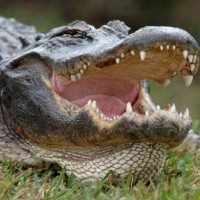
The American Alligator digs burrows in the sand that provide them with warmth, when they leave, the burrow provides many a species with a new home. The alligators also are an apex predator, and keep prey animals numbers in check.
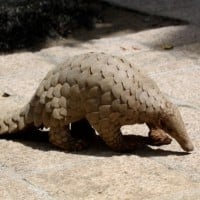
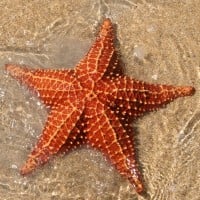 Starfish or sea stars are star-shaped echinoderms belonging to the class Asteroidea. Common usage frequently finds these names being also applied to ophiuroids, which are correctly referred to as brittle stars or "basket stars".
Starfish or sea stars are star-shaped echinoderms belonging to the class Asteroidea. Common usage frequently finds these names being also applied to ophiuroids, which are correctly referred to as brittle stars or "basket stars". Starfish eat mussels, who have no other natural predators. Without the starfish, the mussels would overwhelm their particular ecosystem and many other species would suffer, or die off.
In areas where boating in fresh water lakes is popular, it's important that boaters check their watercrafts for these mussels before and after each launch, as the mussels attach and spread to other bodies of water. The result is devastating, as there are no starfish to prey on the mussels. Mussels are often times an invasive species.
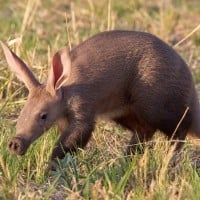
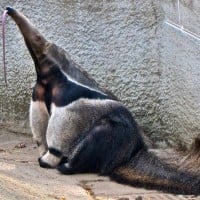 Anteater is a common name for the four extant mammal species of the suborder Vermilingua commonly known for eating ants and termites.
Anteater is a common name for the four extant mammal species of the suborder Vermilingua commonly known for eating ants and termites.
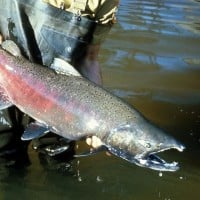
The Salmon die after spawning, and provide a feast for many other creatures, including bears and eagles.
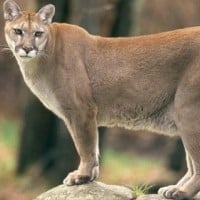 The cougar, also commonly known as the mountain lion, puma, panther, or catamount, is a large felid of the subfamily Felinae native to the Americas.
The cougar, also commonly known as the mountain lion, puma, panther, or catamount, is a large felid of the subfamily Felinae native to the Americas.
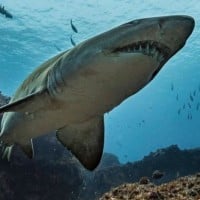 The tiger shark is a species of requiem shark and the only extant member of the genus Galeocerdo. It is a large macropredator, capable of attaining a length over 5 m. Populations are found in many tropical and temperate waters, especially around central Pacific islands.
The tiger shark is a species of requiem shark and the only extant member of the genus Galeocerdo. It is a large macropredator, capable of attaining a length over 5 m. Populations are found in many tropical and temperate waters, especially around central Pacific islands. They'll eat almost anything, including sea turtles and dugongs in the Western Australian seagrass beds. Take them out of that ecosystem and the seagrass gets over grazed. Fish lay their eggs in the seagrass. More sea turtles and dugongs = less fish, and less prey for other species.
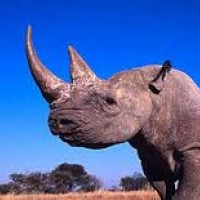
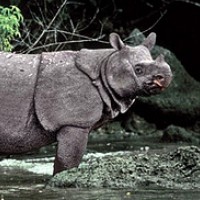 A critically endangered species of rhinoceros native to Indonesia, specifically the island of Java, the Javan Rhinoceros is one of the rarest large mammals on Earth. It has a single horn and a skin that has a number of loose folds, giving it an armor-plated appearance.
A critically endangered species of rhinoceros native to Indonesia, specifically the island of Java, the Javan Rhinoceros is one of the rarest large mammals on Earth. It has a single horn and a skin that has a number of loose folds, giving it an armor-plated appearance.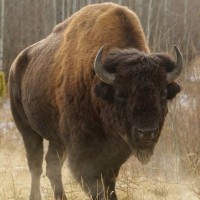
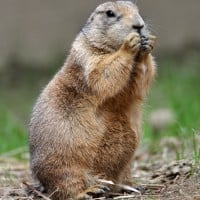 Despite the name, they are not canines. Prairie dogs (genus Cynomys) are herbivorous burrowing rodents native to the grasslands of North America. The five species are: black-tailed, white-tailed, Gunnison's, Utah, and Mexican prairie dogs. They are a type of ground squirrel, found in the United States,... read more
Despite the name, they are not canines. Prairie dogs (genus Cynomys) are herbivorous burrowing rodents native to the grasslands of North America. The five species are: black-tailed, white-tailed, Gunnison's, Utah, and Mexican prairie dogs. They are a type of ground squirrel, found in the United States,... read more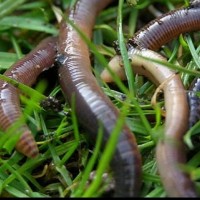
 The grizzly bear less commonly called the silvertip bear, is any North American morphological form or subspecies of brown bear.
The grizzly bear less commonly called the silvertip bear, is any North American morphological form or subspecies of brown bear. Whoa. That guy means business. Thanks for adding
